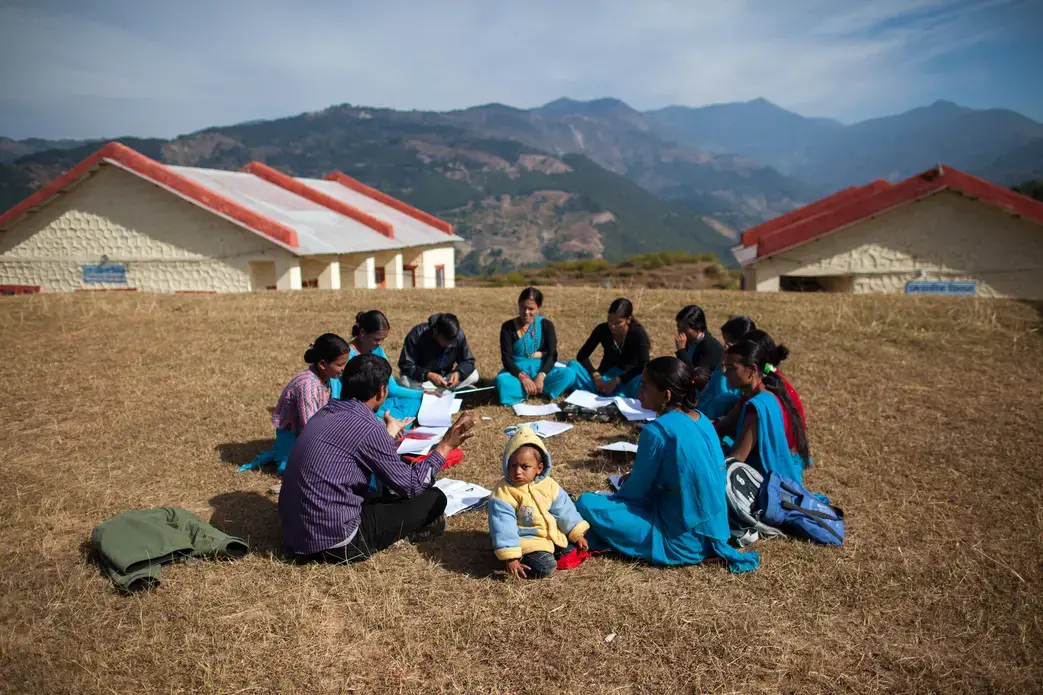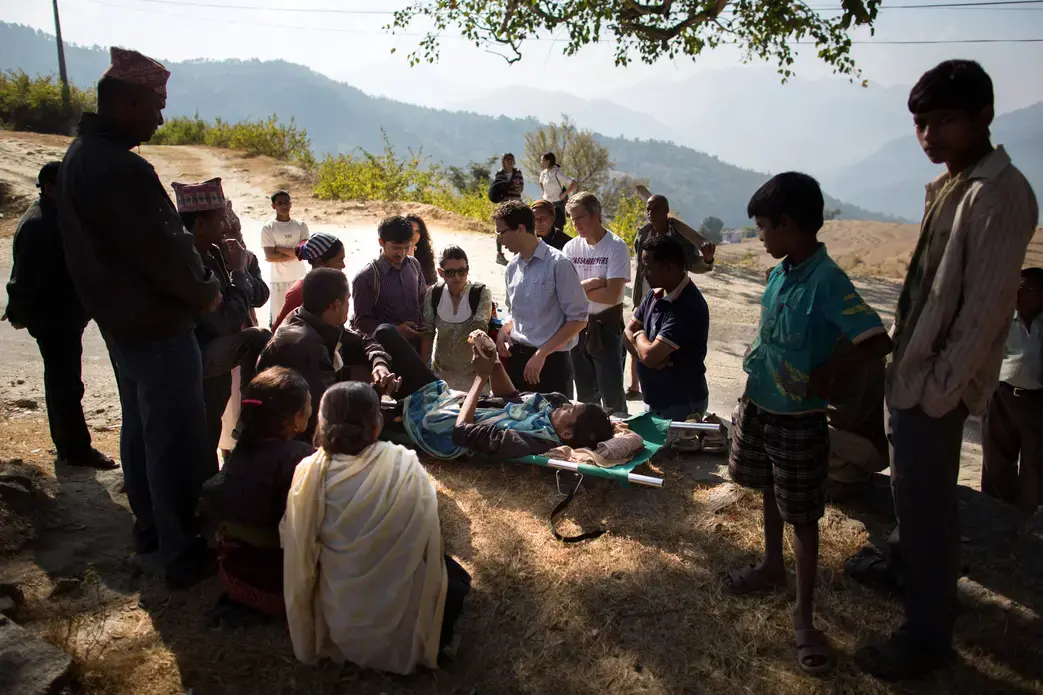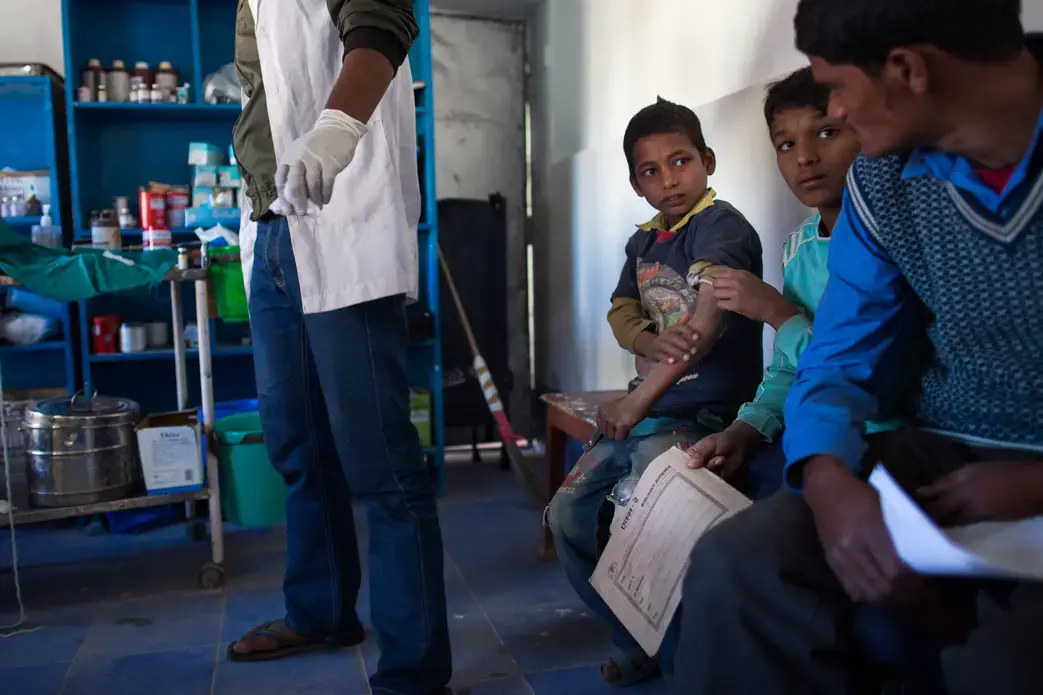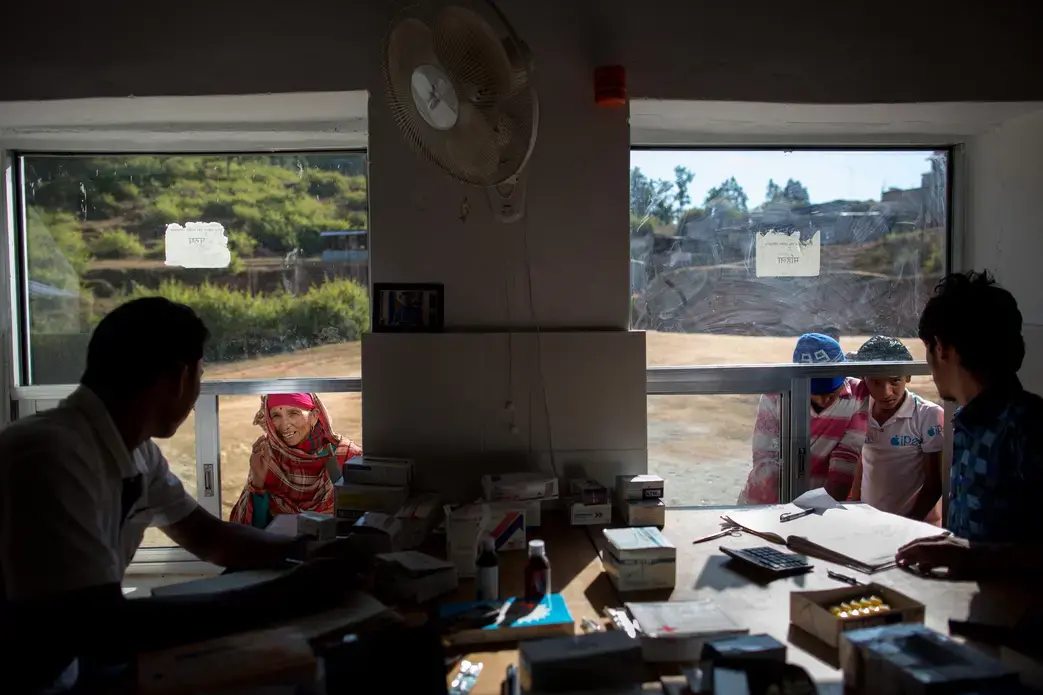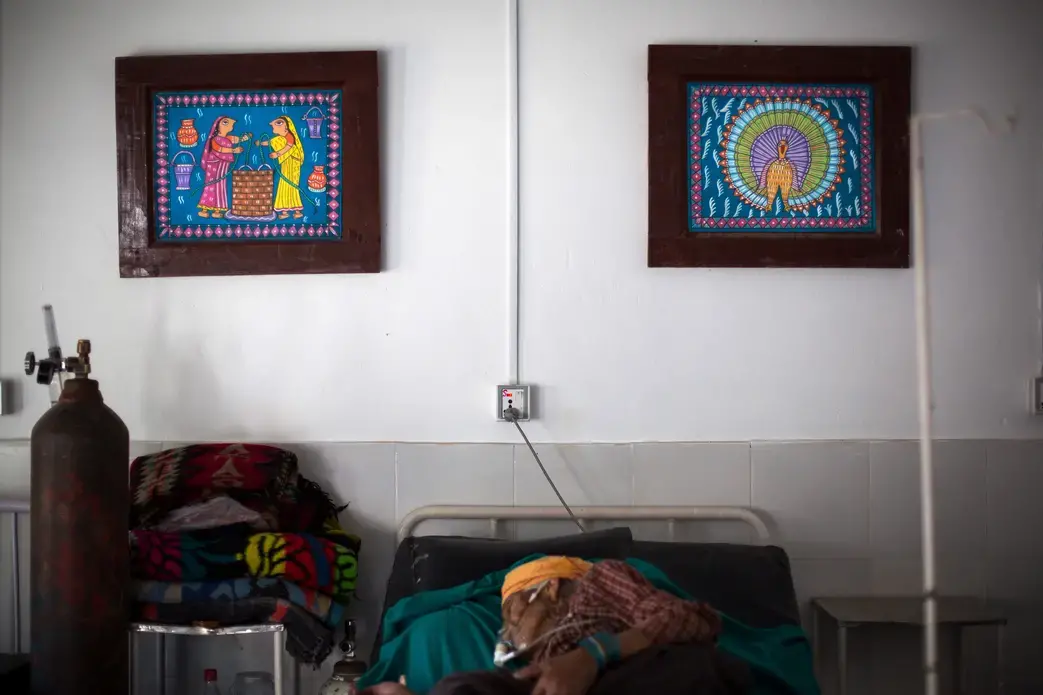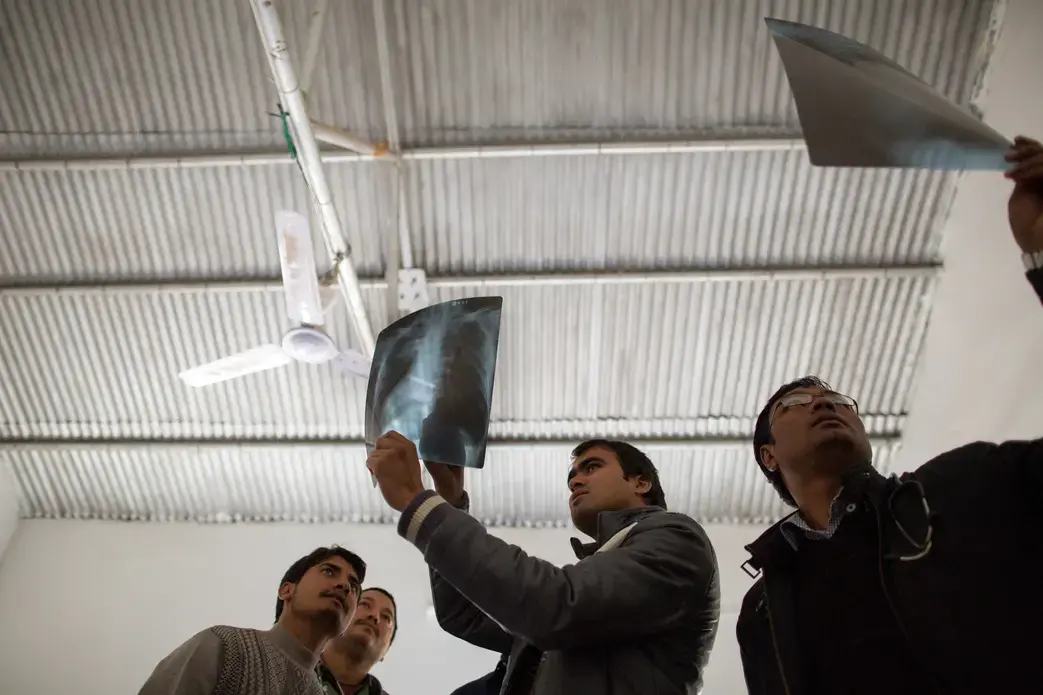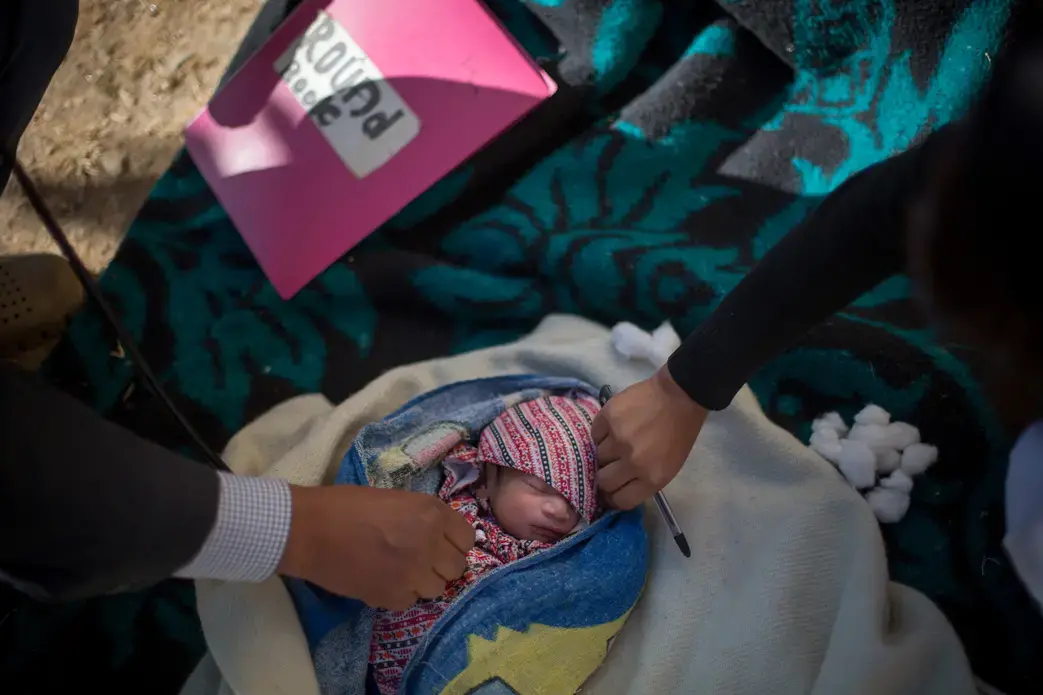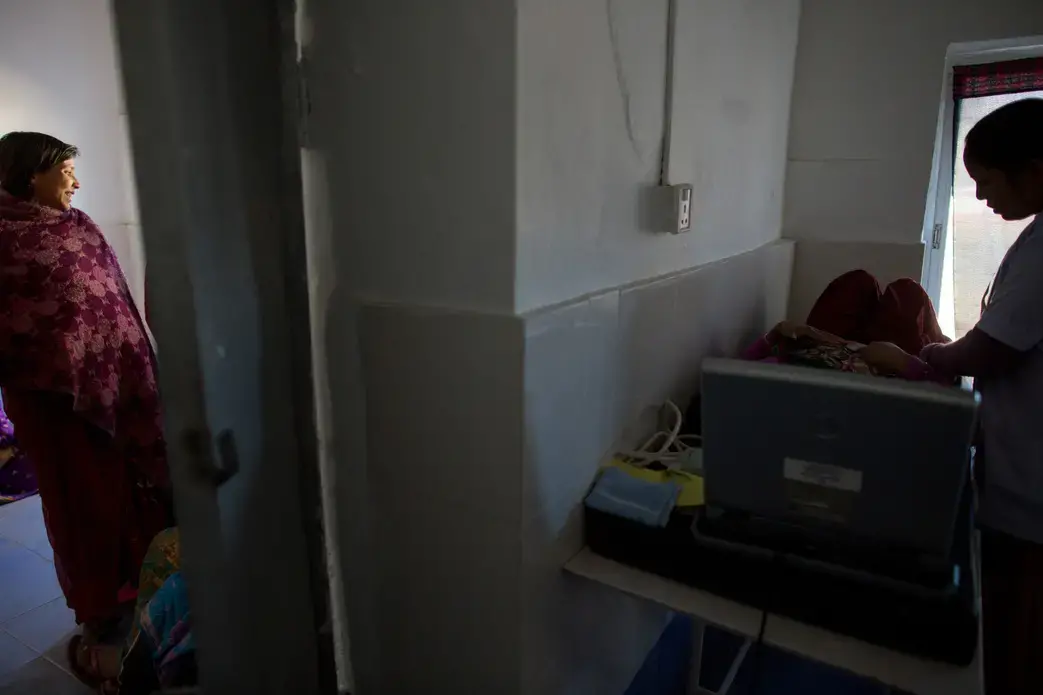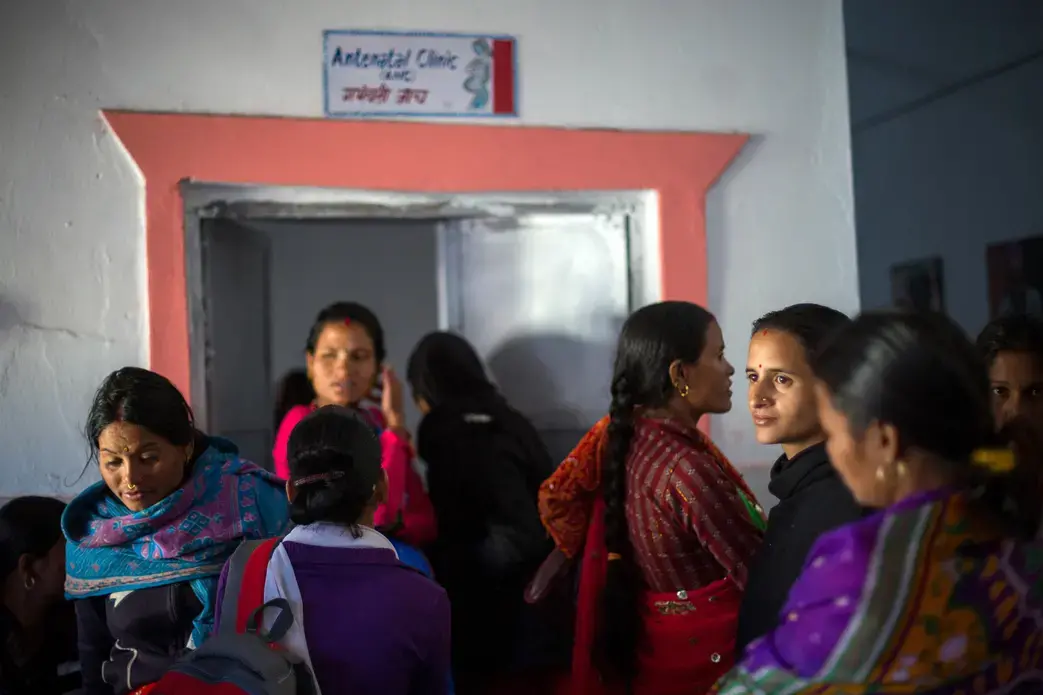ACHHAM, NEPAL
It is a steep climb to Nyaya Health's hospital in far western Nepal, but women walk up the dusty path, in flip-flops and saris, often with babies strapped to their backs. If they are lucky, they catch a ride on a tractor slowly ascending the twisty road. So remote is this place that Nyaya, an American organization, could – if it wanted – operate the facility with little concern about oversight.
The hospital serves what Nyaya executive director Mark Arnoldy calls a "last mile community." His group recently inaugurated a new surgical ward, and has the only microbiological lab in the far west. But mostly patients come for the basic health issues that plague the poor: malnutrition, diarrhea, pregnancy, HIV, and trauma.
At first glance the cluster of buildings bustling with local patients, Nepali doctors, a couple random tea vendors and one small white dog named "aloo" ("potato") seems like it could be any missionary clinic, any health charity.
But Nyaya was built by a team of American doctors who seek not only to fill gaps in rural health care, but also to bring a new level of transparency to how nongovernmental organizations in Nepal and beyond function. Nyaya health has an open access "wiki" page where they store everything, from line-by-line budget expenses, to standards of practice, and internal emails. There is even a section called "mortality data" which includes notes from meetings where staff members dissect their failures and explore how and why patients died.
The effort is part of a small but growing movement in the international aid sector toward greater transparency and demonstration of long-term impact. Some sites that have popped up to track aid and its effectiveness include aiddata.org and charitynavigator.org.
The trend "signals that international charity work is moving from good intentions and warm feelings to hard evidence and serious questions," says Tom Murphy, an aid blogger who closely monitors international development trends. "The organizations that are more transparent see the writing on the wall and are ahead of an inevitable path towards a more informed public. It means that smaller organizations, like Nyaya Health, who effectively implement proven solutions to health problems can be held up as examples of doing aid right."
Nyaya's wiki "was born out of indignation and being really, really frustrated at the alphabet soup of NGOs in Nepal that were not accountable to anything, that didn't even have a website. Where you can't find any outcomes or metrics; anything about their finances, or even who's on their team," says Mr. Arnoldy.
Wiki too wonky?
So far, the wiki has not entirely solved those problems. The website is clunky, and some of the sections have not been updated in over a year.
But the commitment to transparency has won Nyaya accolades by charity monitors because, for all its faults, the wiki is a paradigm shift from how most NGOs and charities demonstrate their work. Nyaya also produces the glossy reports more typical of organizations, pages gleaming with portraits of smiling "beneficiaries" as recipients of aid are called in NGO circles. But they are focused on proving their effectiveness. They call themselves a "for impact" organization rather than a "non-profit."
Givewell.org, an organization that evaluates charities for their effectiveness labeled Nyaya a "standout organization" in 2011, highlighting its "unusual transparency" and extensively referencing the wiki.
The point of Nyaya's push for transparency is to put the tools in place to be held accountable across the board, to donors, to the Nepali government, and eventually to their patients – though at the moment it is a stretch to imagine local residents who mostly live without electricity logging on to check out statistics. They also hope that the data they make public can be used to further global health research.
But the Nyaya staff are frustrated with the current state of the wiki. On the wiki transparency page there is a self-effacing note: "It is important to acknowledge that, while we have a stated mission of transparent operations and we have in fact published an academic paper on the subject, we have not achieved much success at an operations level." The note continued to highlight sporadic updates and gaps in the data.
Mr. Murphy, the aid blogger, agrees that the website is hard to use. "As someone who generally knows what to look for, I still find it hard to navigate," he said in an email.
The wiki has pages of data but not always a way to see a clear bigger picture of what is working and what is not.
"I think I can call it a total and absolute failure, but it's something the organization really loves from a philosophical perspective," said Ryan Schwarz, the former director of operations and current board member, at a meeting in Boston to discuss new research and advocacy initiatives.
Nyaya is working on developing a wiki 2.0, something that will link a simplified, easily navigable front site with the deeper reams of data. "Transparency without accessibility is futile," Arnoldy says.
They have been delayed in upgrading the system because they sought to partner with another platform for the wiki, but found themselves facing a dearth of models. "The sad state of affairs is [that while] there are a lot of great funding platforms out there … we've looked for one that's impact heavy, with a more sophisticated vision of what the impact is … and frankly it doesn't exist," Arnoldy says.
He says that while they have found some inspiration from the clean water organization Splash that runs a separate website called provingit.org as well as donorschoose.org which funds projects in public schools, they haven't found a translatable website to partner with in upgrading the wiki. So the organization plans to build it themselves and launch the new site by the end of the summer.

Education Resource
Nepal: Journalists Allison Shelley and Allyn Gaestel on Chaupadi
Allison Shelley and Allyn Gaestel, the team behind the Pulitzer Center project "Chaupadi: Nepali...




